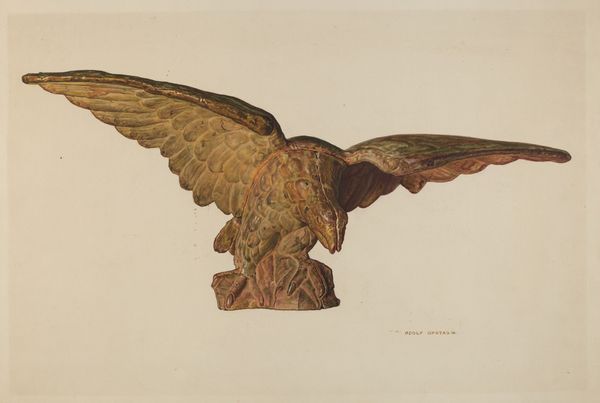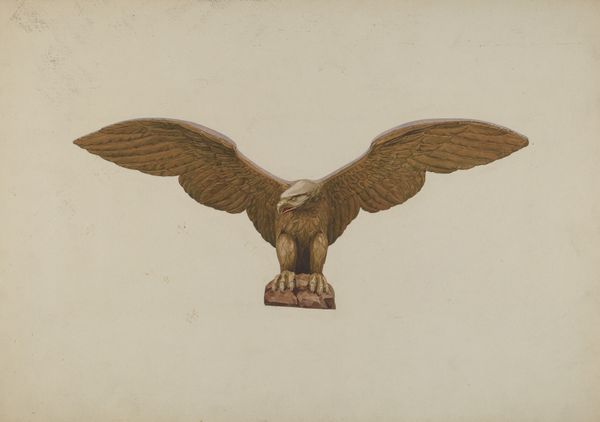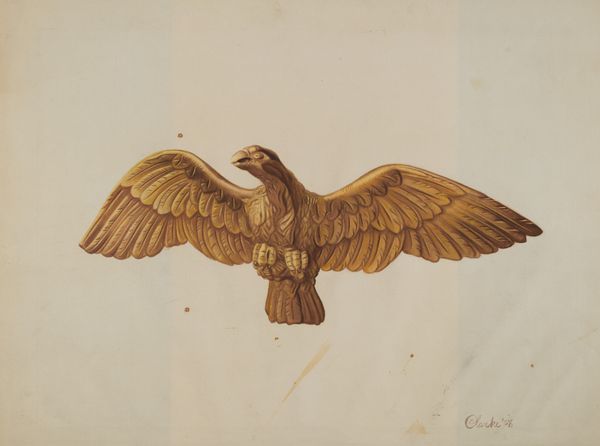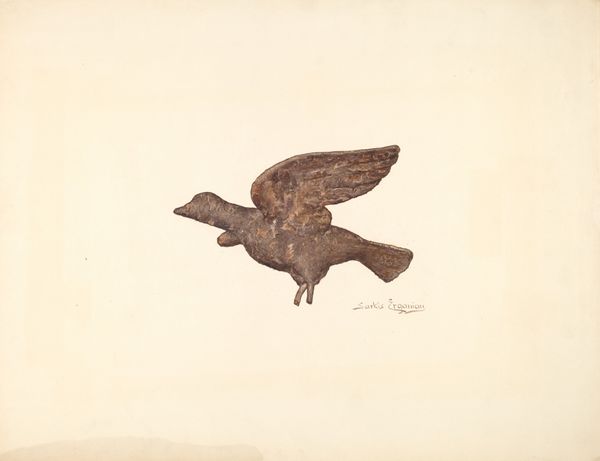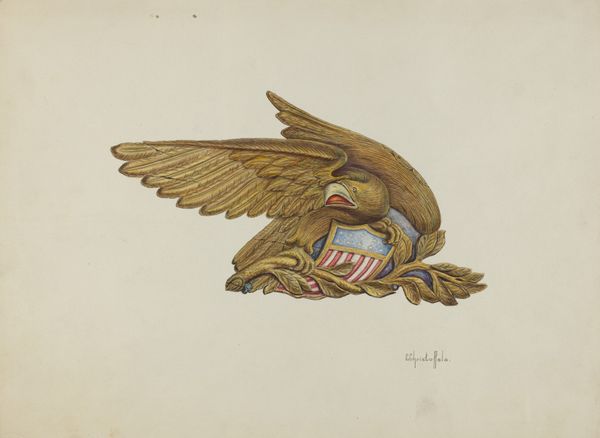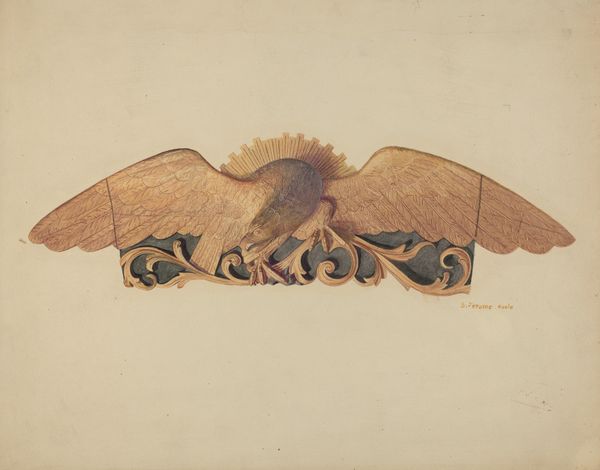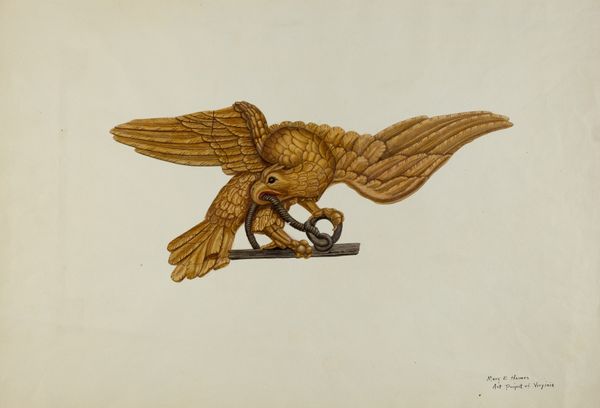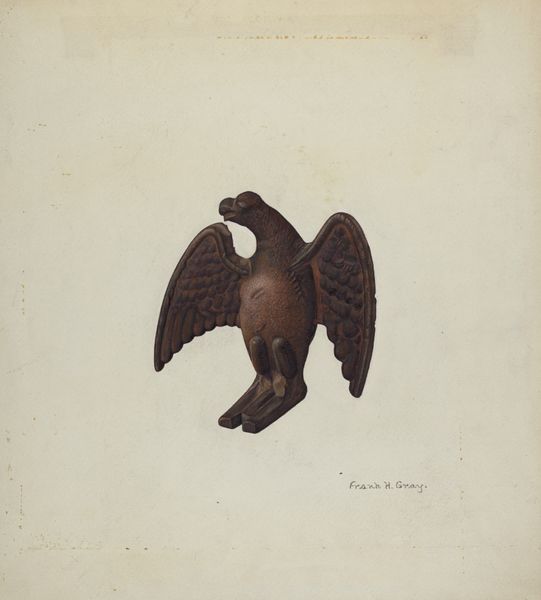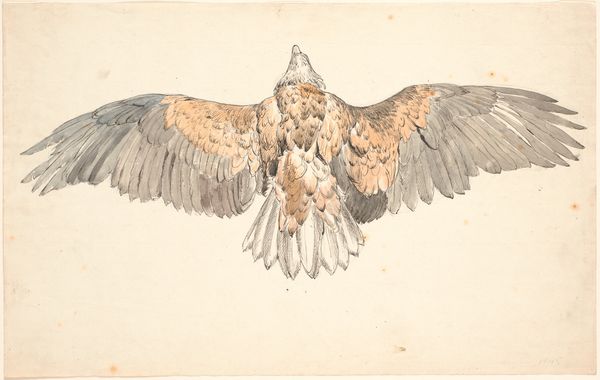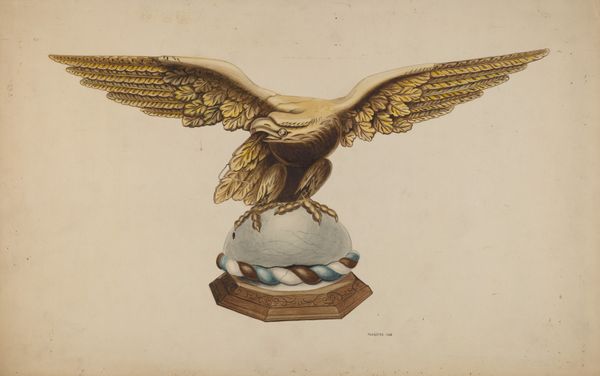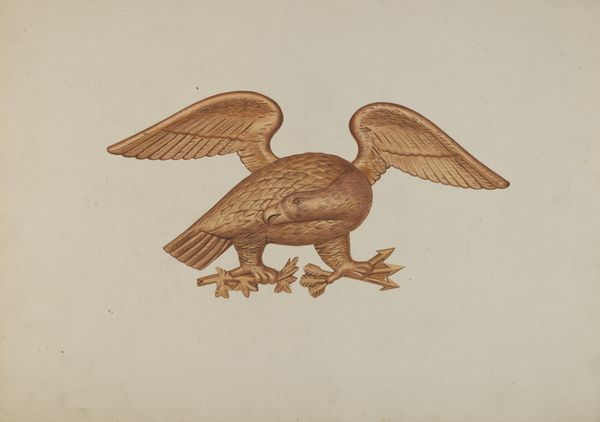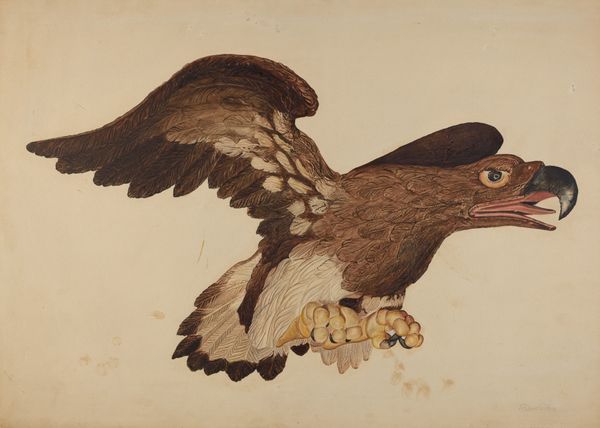
drawing, paper, watercolor
#
drawing
#
figuration
#
paper
#
watercolor
#
pencil drawing
#
watercolour illustration
#
surrealist
#
decorative-art
Dimensions: overall: 38.3 x 51 cm (15 1/16 x 20 1/16 in.)
Copyright: National Gallery of Art: CC0 1.0
Curator: Here we have Beverly Chichester’s “Carved Eagle,” created around 1938 using watercolor and pencil on paper. It depicts a stylized eagle, wings spread wide, grasping something unseen in its beak. What do you think? Editor: Well, initially, the colour palette strikes me. The predominantly earthy tones create an almost antiquated feel. The linework gives it real definition and depth— particularly those detailed feathers and formidable talons. There’s a peculiar balance between aggression and decoration, I find it somewhat appealing! Curator: It's interesting that you pick up on that dual nature. Chichester created this drawing during the Depression era. Representations of the eagle were frequently seen in public spaces; they appeared as symbols of national strength but were also perceived as being emblems of power in a time of widespread anxiety. Editor: It's hard to ignore that context, isn't it? It would almost suggest a deliberate effort in the decorative rendering. Are the slightly bronzed palette and symmetrical organization an ironic counterpoint to a struggling society, do you think? It certainly takes on new dimensions when you factor that in. Curator: Possibly, yes. Also, think of the Works Progress Administration which employed artists to create works, and consider their social function within this framework. What does it communicate to you, beyond the technical application? Editor: A definite tension! I agree. The sharp, claw-like forms contrasting with softer textures create a visually interesting composition, no? Is that mouth perhaps screaming silently into a banner? It’s unsettling. Curator: The banner being swallowed seems symbolic, yes. One reading can't overlook the time it was created. The image can possibly address censorship of rising propaganda in authoritarian regimes—a kind of muted cry for freedom. Editor: Fascinating. The layering of artistic intent and historical resonance really allows one to appreciate the multiple ways of experiencing this drawing. Thank you! Curator: And thank you! Reflecting on Chichester's "Carved Eagle" has certainly brought new depth to my understanding, also.
Comments
No comments
Be the first to comment and join the conversation on the ultimate creative platform.
